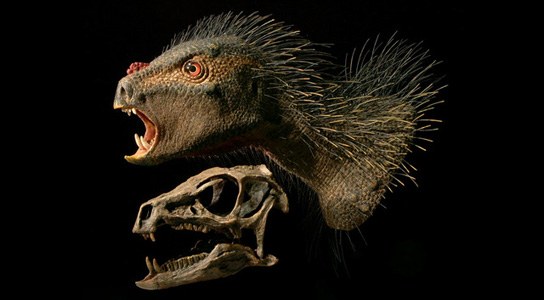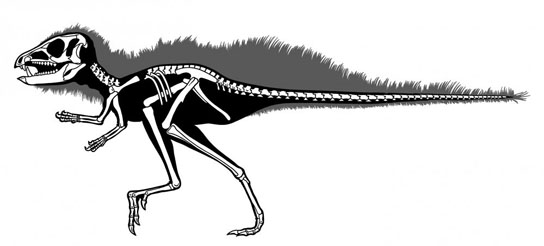
Pegomastax africanus is a new species of plant-eating dinosaur with tiny, 1-inch-long (2.5-centimeter-long) jaws, which was discovered in South Africa. It thrived during the Lower Jurassic, Hettangian to Sinemurian, about 200 to 190 million years ago.

Pegomastax africanus is a new species and features a short, parrot-shaped beak, a pair of stabbing canines and tall teeth for slicing plants. Illustration by Todd Marshall
The researchers published their findings in the journal ZooKeys. This herbivore is part of the family heterodontosaurs, which were among the first dinosaurs to spread across Earth. This specimen was unearthed in the 1960s and recently discovered in a collection of fossils at Harvard University by Paul Sereno, paleontologist, University of Chicago.
P. africanus had a short, parrot-shaped beak, a pair of stabbing canines and tall teeth tucked behind for slicing up plants. The tall teeth in its upper and lower jaw worked like scissors. The skull is less than 3 inches (8 centimeters) in length and it may have been adapted to plucking fruit.
It’s rare that plant-eaters sport sharp-edged, enlarged canines. It’s possible that self-defense and competitive sparring for mates might have played a role in the development of these teeth. P. africanus was also covered in bristles, which most likely covered most of its body. It measured less than 2 feet (60 centimeters) and weighed less than a housecat.

200 million years ago, the supercontinent Pangaea had just begun to split into northern and southern landmasses. Heterodontosaurs appear to have divided up similarly, with the northern species like Tianyulong confuciusi developing simple triangular teeth and the southern species developing taller crows like P. africanus.
Reference: “Taxonomy, morphology, masticatory function and phylogeny of heterodontosaurid dinosaurs” by Paul C. Sereno, 3 October 2012, ZooKeys.
DOI: 10.3897/zookeys.226.2840